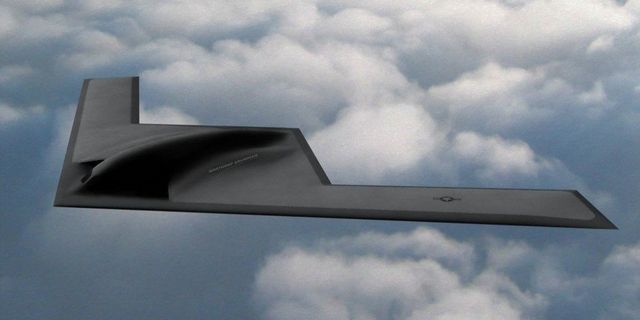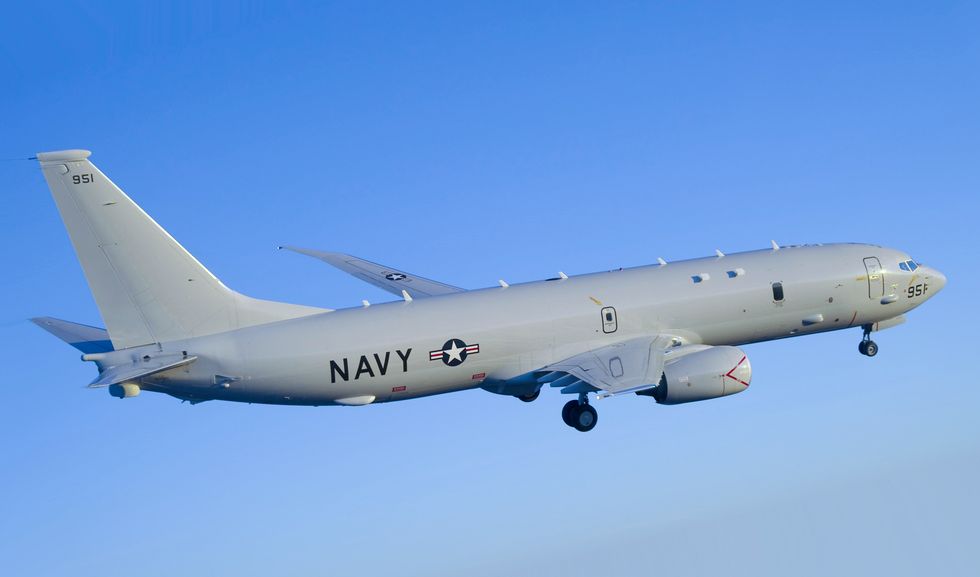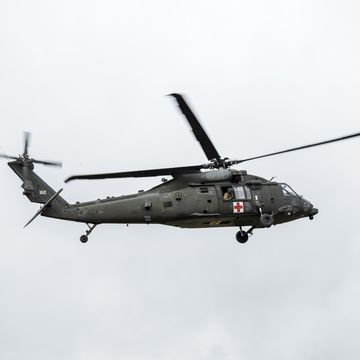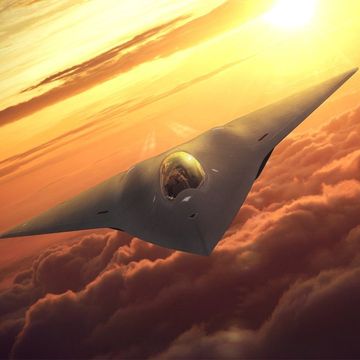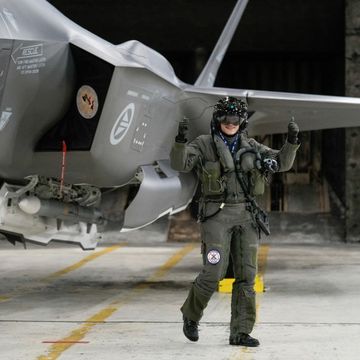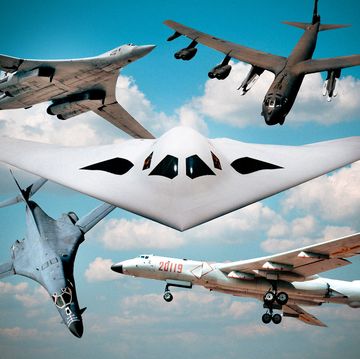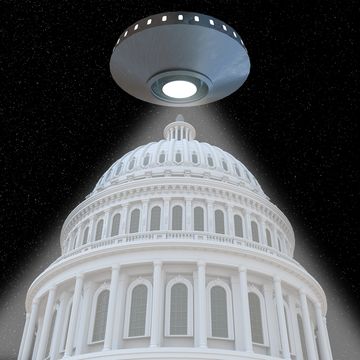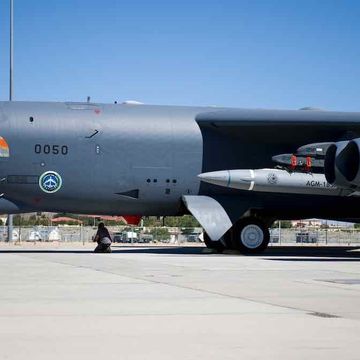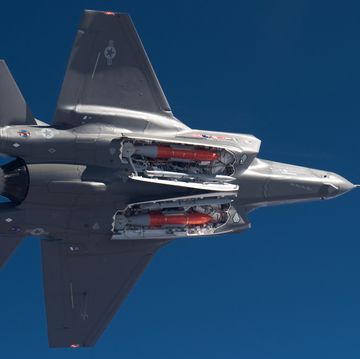Back in December, Donald Trump caused a ruckus when he tweeted that the costs for replacing Air Force One jets were "out of control." Now that Trump is in office, Defense Secretary James Mattis has ordered a full review of the $3.2 billion project to find ways to cut back costs. The aviation industry at large has taken notice.
According to Aviation Week, a new report from aerospace and defense analysts has gone so far as to suggest ditching the massive Boeing 747-8 as the airframe for Air Force One and instead modifying another aircraft for presidential use—perhaps Boeing's smaller 737, or even the B-21 stealth bomber still in development by Northrop Grumman.
The current pair of Air Force One aircraft are modified 747s officially called Boeing VC-25s. They have been in service since 1990. To shift away from a 747-based AF1, the requirements for the presidential transport would need to change. Among other things, the Air Force stipulates a four-engine jet that can accommodate at least 70 passengers. The United States has begun the process to build new AF1 aircraft, but those rules effectively limit the airframe options to the Boeing 747 and the Airbus A380.
The new report released by consulting company Wright Williams & Kelly (WWK), however, suggests major cost savings can be achieved by changing the requirements to allow smaller aircraft to be considered for Air Force One. The 737, for example, has already been converted for military use on many occasions, and outfitting a fleet of 737s for the president would allow the Air Force to avoid the massive one-time investment of militarizing the new 747-8 for the first time. Industry experts also expect the 737 to continue flying for decades while 747 sales taper off, possibly foreshadowing the ultimate end of the jumbo jet. Danny Lam, spokesman for the WWK report, told Aviation Week, "We're still going to be flying 737s for at least 30 years down the road."
A bolder and more intriguing (if less realistic) suggestion is to use the future B-21 Raider next-generation stealth bomber as a primary Air Force One presidential transport. Although the passenger capacity would have to be drastically cut to just a handful of aides and crew members, the B-21 offers unsurpassed survivability in the form of stealth and shielding against conventional and electronic attacks. With sophisticated surface-to-air missiles becoming more readily available to non-state insurgent groups, survivability of Air Force One may trump other considerations.
Lam told Aviation Week:
The 747 is a fat radar target, about the size of a B-52. [The B-21] has stealth built in, it's nuclear-rated and heavily shielded right off the bat. It's going to be terribly cramped but man, it would be a survivable platform, especially if operated in twos and threes.
With a small team crammed into the hollowed-out weapon bays of the B-21, additional staff, military support, and media would be required to travel in convoy aircraft that accompany Air Force One. The president would conduct his or her business with people on other planes via encrypted communication systems. The WWK report used the unclassified B-2 Spirit's design in place of the B-21, which is expected to enter service in the mid-2020s and is still a classified aircraft.
As enticing as it might sound, the B-21 is unlikely to become the next Air Force One. At the very most, a B-21 could be outfitted as a supplemental transport for the president in special circumstances or in an emergency. Abandoning the 747 for the 737, however, is more likely to garner serious consideration by the Air Force.
A military variant of the 737, the C-40, is already used to carry high-ranking passengers of the Air Force and Navy. The Navy's P-8 Poseidon is another 737 variant; it's a submarine hunter that can be outfitted with torpedoes, depth charges, and anti-ship missiles. The C-40 and P-8 could serve as roadmaps to outfit a 737 with almost all of the secure communications equipment and defensive measures required for Air Force One, such as protections against an electromagnetic pulse (EMP) and radar jamming equipment.
One clear drawback of the 737 is range. The C-40 has a range of 4,500 to 5,000 nautical miles without refueling, according to Aviation Week. A similar Air Force One craft could therefore fly from Joint Base Andrews in Maryland to Western Europe, South America, and North Africa without taking on fuel. By stopping at Travis Air Force Base in California, a 737 Air Force One could travel to Hawaii and possibly Japan without refueling. For longer flights, the WWK report suggests retaining the currently used VC-25 Boeing 747s, and of course an accompanying tanker such as the KC-135, KC-10, or future KC-46 could significantly increase the range of a 737.
Deciding to move away from the 747-8 as the future Air Force One would inherently require more aircraft to fly in convoy with the president. However, cargo ships carrying the president's helicopter and armored limo, as well as additional military and tanker aircraft, regularly fly support missions with Air Force One. The saved costs of shifting to a smaller aircraft could outweigh the additional operating requirements, and ultimately improve the survivability of the president's plane. The report also suggests the Boeing 767 and airframes from foreign manufactures such as Airbus, Bombardier and Embraer should be considered for Air Force One.
Is the president going to regularly fly in a blended wing body stealth bomber? Probably not. But whether the Commander in Chief will continue to fly in a Boeing 747 is anything but a certainty at this point.
Source: Aviation Week

Jay Bennett is the associate editor of PopularMechanics.com. He has also written for Smithsonian, Popular Science and Outside Magazine.
